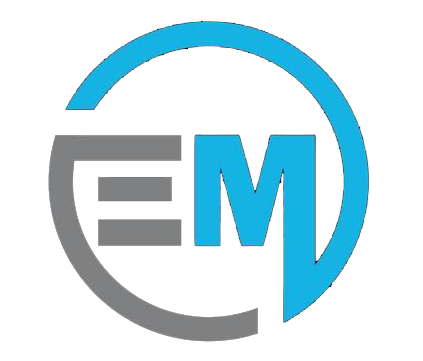Explore ArticleShow
- Why Choose Eco-Friendly Insulation Materials?
- Top 6 Eco-Friendly Insulation Materials
- 1. Cellulose Insulation: Recycled Paper for Superior Efficiency
- 2. Spray Foam Insulation: A High-Performance Green Option
- 3. Sheep’s Wool Insulation: Natural and Renewable
- 4. Cotton (Denim) Insulation: Recycled Fabric for a Green Home
- 5. Cork Insulation: Sustainable and Versatile
- 6. Hemp Insulation: A Plant-Based Powerhouse
- How to Choose the Right Eco-Friendly Insulation for Your Home
- 1. Climate and Location
- 2. Budget
- 3. Installation Process
- 4. Durability and Maintenance
- Frequently Asked Questions (FAQs)
- Conclusion: Making the Sustainable Choice for Your Home
In today’s world, sustainability is no longer just a trend; it’s a necessity. As more homeowners and renovators seek eco-friendly solutions, one of the most impactful areas to focus on is insulation. Insulating a home effectively not only helps to reduce energy bills but also contributes to a greener, healthier environment. In this article, we explore the best eco-friendly insulation materials for sustainable home renovations, highlighting their benefits, environmental impact, and practicality.
Why Choose Eco-Friendly Insulation Materials?
Eco-friendly insulation materials offer significant benefits over conventional options, both in terms of environmental impact and performance. These materials are often made from renewable resources, are non-toxic, and have a lower carbon footprint compared to traditional insulation like fiberglass or foam. Moreover, using eco-friendly insulation can help homeowners maintain comfortable indoor temperatures year-round, reduce energy consumption, and improve indoor air quality.
Top 6 Eco-Friendly Insulation Materials
1. Cellulose Insulation: Recycled Paper for Superior Efficiency
Cellulose insulation is one of the most eco-friendly options available. Made from recycled newspaper, cardboard, and other paper products, this material is treated with a non-toxic fire retardant for safety.
Key Benefits:
Sustainability: Since cellulose is made from recycled materials, it helps divert waste from landfills.
Energy Efficiency: Cellulose has a high R-value, meaning it provides excellent thermal resistance.
Soundproofing: Cellulose also has great acoustic properties, making it ideal for noise reduction.
Best For: Attic spaces, walls, and floors.
2. Spray Foam Insulation: A High-Performance Green Option
Spray foam insulation is created by combining two materials—polyurethane and a foaming agent—to create a foam that expands into gaps and cavities. While it is often made from petrochemical products, there are eco-friendly versions that use renewable resources like soy or castor oil.
Key Benefits:
Seals Gaps and Cracks: Spray foam expands on application, filling gaps and cracks that might otherwise be missed with traditional insulation.
Energy Savings: Its excellent insulating properties can drastically reduce energy consumption.
Long-Term Durability: Once applied, spray foam insulation lasts for years without deteriorating.
Best For: Hard-to-reach areas, around pipes, and for sealing air leaks.
3. Sheep’s Wool Insulation: Natural and Renewable
Sheep’s wool is a natural, renewable, and highly effective insulation material. It is lightweight, easy to handle, and provides great thermal performance.
Key Benefits:
Non-Toxic: Wool is safe to handle, unlike some other insulation materials that may pose health risks during installation.
Moisture Control: Wool can absorb moisture without compromising its insulating properties, making it ideal for areas prone to humidity.
Sustainable: Sheep’s wool is a renewable resource that is biodegradable.
Best For: Walls, floors, and attics.
4. Cotton (Denim) Insulation: Recycled Fabric for a Green Home
Cotton insulation, often made from recycled denim, is a sustainable and safe alternative to fiberglass insulation. It’s soft, non-toxic, and highly effective at insulating.
Key Benefits:
Recycled Materials: Made from post-consumer cotton fabric, cotton insulation helps reduce textile waste.
Safe and Healthy: Unlike fiberglass, cotton insulation doesn’t cause skin irritation, making it safer for both installers and residents.
Thermal and Acoustic Properties: Cotton insulation offers a good balance of heat resistance and soundproofing.
Best For: Walls, attics, and floors.
5. Cork Insulation: Sustainable and Versatile
Cork is a natural and renewable resource harvested from the bark of cork oak trees. It’s durable, lightweight, and highly resistant to moisture, making it an excellent choice for eco-friendly insulation.
Key Benefits:
Renewable: Cork is harvested without harming the tree, ensuring a sustainable supply.
Thermal and Acoustic Performance: Cork provides excellent insulation and helps reduce noise pollution.
Water-Resistant: Its water-resistant properties make it ideal for damp environments like basements.
Best For: Floors, walls, and ceilings.
6. Hemp Insulation: A Plant-Based Powerhouse
Hemp is a highly sustainable material that can be used for insulation. It’s grown without the need for pesticides or herbicides, making it an eco-friendly alternative to traditional materials.
Key Benefits:
Sustainable Growth: Hemp grows quickly and requires little water or fertilizers.
Natural Insulation: Hemp fibers trap air, providing excellent thermal resistance.
Mold and Pest Resistance: Hemp is naturally resistant to mold and pests, making it ideal for high-moisture areas.
Best For: Walls, floors, and attics.
How to Choose the Right Eco-Friendly Insulation for Your Home
When selecting the best eco-friendly insulation for your renovation, consider the following factors:
1. Climate and Location
- In warmer climates, you’ll want insulation materials that offer excellent heat resistance. Materials like cellulose, cotton, and cork are ideal.
- For colder climates, materials that provide high R-values and thermal efficiency, such as spray foam or hemp, are more appropriate.
2. Budget
- Eco-friendly insulation materials can vary in price. Cotton and cellulose tend to be more affordable, while spray foam and cork may be more expensive. Be sure to balance performance with cost.
3. Installation Process
- Some materials, such as spray foam, require professional installation, while others, like cellulose and cotton, are easier for DIY installations.
4. Durability and Maintenance
- Materials like spray foam, cork, and hemp are long-lasting with minimal maintenance, while sheep’s wool and cotton may need replacement after a certain period.
Frequently Asked Questions (FAQs)
1. Is cellulose insulation safe for my home?
Yes, cellulose insulation is made from recycled paper and treated with a non-toxic fire retardant. It is safe for use in homes and provides excellent thermal and soundproofing benefits.
2. Can I install eco-friendly insulation myself?
Some eco-friendly materials, such as cotton and cellulose, are relatively easy to install and can be handled by DIY enthusiasts. However, materials like spray foam insulation require professional installation.
3. What are the benefits of using cork as an insulation material?
Cork is highly sustainable, water-resistant, and offers excellent thermal and acoustic properties. It’s perfect for areas with high humidity and provides natural insulation for both sound and heat.
4. How does sheep’s wool insulation compare to other eco-friendly options?
Sheep’s wool is a natural, renewable, and safe material that excels in moisture control and thermal resistance. It may be more expensive than other options but is ideal for homes seeking a highly sustainable, non-toxic solution.
5. Are plant-based insulation materials like hemp and cotton as effective as synthetic options?
Yes, plant-based materials like hemp and cotton provide excellent thermal and soundproofing properties. While they may not be as widely known as synthetic options, they are highly effective and offer the added benefit of being eco-friendly and non-toxic.
6. Can eco-friendly insulation help reduce energy bills?
Yes, many eco-friendly insulation materials, such as cellulose and spray foam, provide excellent thermal resistance, which can significantly reduce heating and cooling costs over time.
Conclusion: Making the Sustainable Choice for Your Home
Choosing eco-friendly insulation for your home renovation is a smart decision for both the environment and your wallet. From recycled cotton to natural materials like hemp and cork, there are many sustainable options available to enhance your home’s energy efficiency and comfort. By opting for one of these materials, you’re not only improving the performance of your home but also contributing to a greener, more sustainable future.



